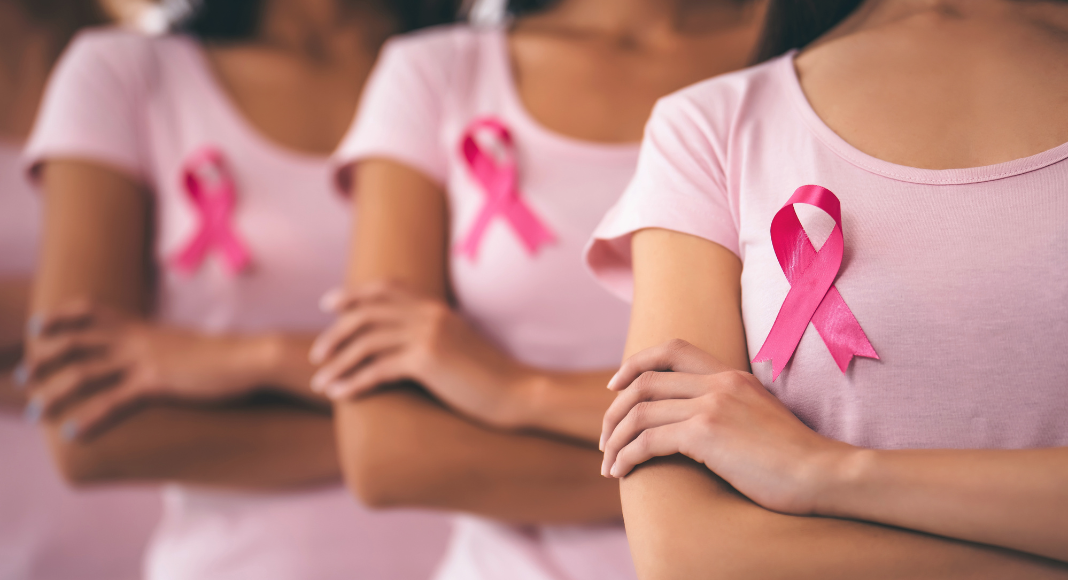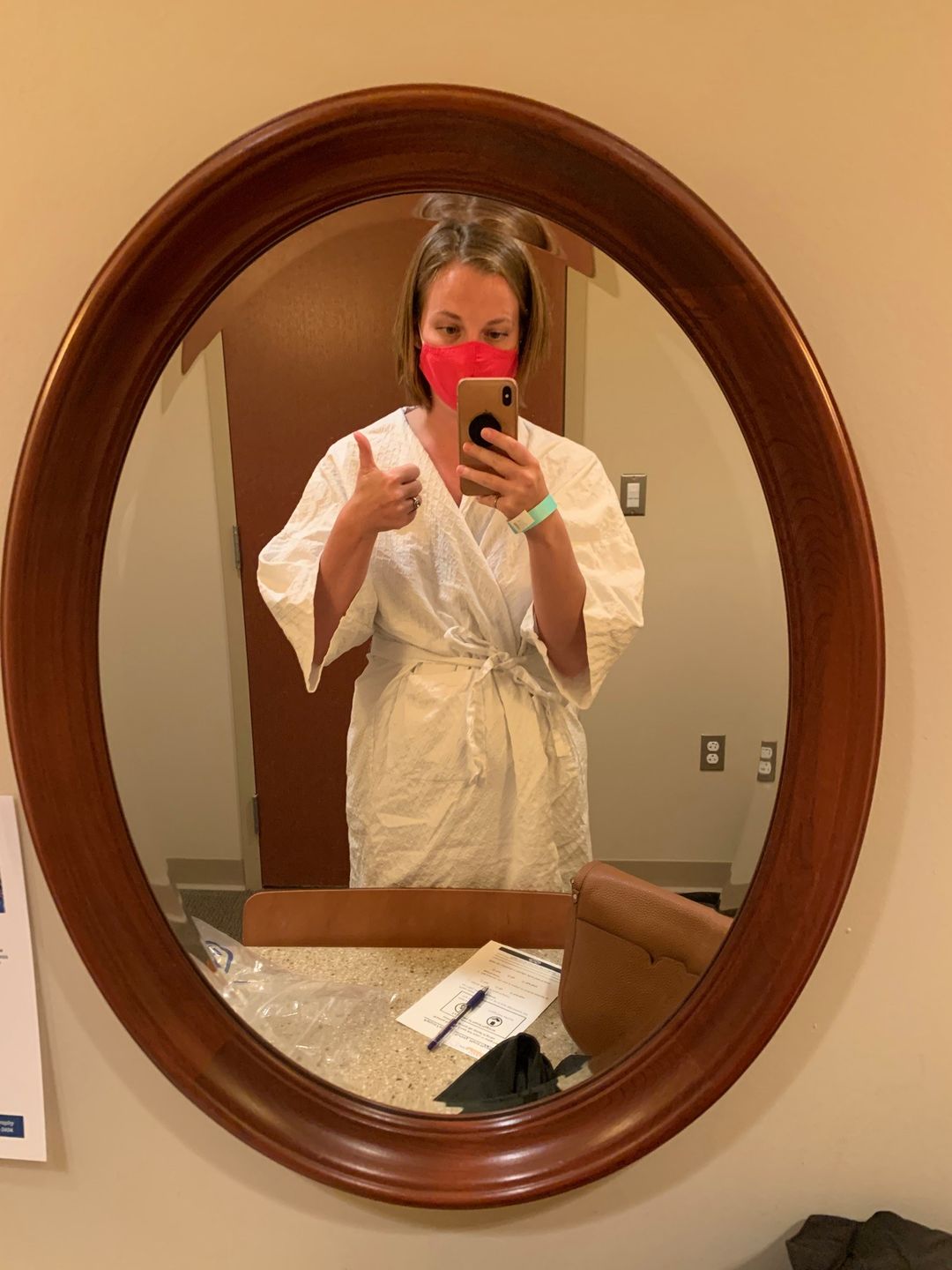DISCLAIMER: The following post outlines the writer’s personal experience with breast health and having a mammogram. It is not intended to act as medical advice. As always, please consult your doctor with any questions about breast health or having a mammogram.
October is Breast Cancer Awareness Month and for far too many of us, we know someone who has been, or have personally been, affected by breast cancer. According to the National Breast Cancer Foundation, one in eight women in the United States will develop breast cancer in her lifetime.
Let that sink in for a moment. One in eight. The likelihood that you or someone in your circle of friends or family will develop breast cancer is incredibly high. Luckily, there are ways we can stay ahead of it and be prepared, rather than being worried. As someone who is highly aware of my own personal breast health, I want to give you some insight and encouragement to consider your breast health beginning this October.
Family History
Both my mom’s sister and my mom’s mother had breast cancer. My aunt was diagnosed in her thirties and my grandma was diagnosed in her eighties. Both of them endured mastectomies and treatments and eventually they were cancer free. Through my late teens and twenties, when I would note that I have a family history of breast cancer, especially since my aunt was so young, my doctors would all say, “You’ll start getting mammograms at 30.”
I dreaded it. I spent most of my late twenties worrying about what getting a mammogram would be like. Wondering if they were going to find something. Thinking about having to be in that particular office so young, but also potentially not young enough. And then 30 finally rolled around and I knew I had to make that appointment.
Mammograms Aren’t That Bad
Okay, hear me out. The actual mammogram itself is not that bad. Yes, it’s squishy, and your breasts are flattened like a pancake while you’re told to hold your breath. Yes, it’s a little weird standing in front of a person you’ve never met with your top off. But if you have a good mammogram technician, you’re in and out in less than ten minutes.
When I went for my first mammogram five years ago, I was beyond nervous. The technician was so sweet and kind and helped me feel at ease. The scans, although not the most comfortable thing in the world, were fast and simple. A few days later, I received a message in my online chart that the mammogram was clear. What a relief!
Mammograms are important because they allow doctors to see lumps in breast tissue before they can be felt. Early detection in breast cancer can save lives and make the recovery that much easier and faster. Typically, mammograms are recommended every 1-2 years for women age 40 and older. But you should speak with your health care professional to determine if you need to start getting mammograms sooner or with more frequency.
Breast Self-Exams
Mammograms are a fantastic tool to help see inside the breast tissue, but it’s not realistic or necessary to get them all the time. That’s where breast self-exams come into play. Adult women of all ages are encouraged to perform breast self-exams at least once a month. Johns Hopkins Medical Center states, “Forty percent of diagnosed breast cancers are detected by women who feel a lump, so establishing a regular breast self-exam is very important.”
The reasoning behind it is pretty simple: you know your body better than anyone else. By setting up a regular breast self-exam, you’ll be able to note any changes immediately. Again, early detection is super important to fighting breast cancer.
There are three different methods to do a breast self-exam:
- In the shower.
- While holding one arm above your head, use the pads of three fingers on your opposite hand to press around on your breast using soft, medium, and firm pressures. Check both breasts for any lump, thickening, hardened knot, or other changes.
- In front of the mirror.
- Visually inspect your breasts with your arms at your sides and then again with your arms above your head. Note any swelling, dimpling of the skin, or changes in your nipples.
- Lying down.
- Place one arm behind your head and using light, medium, and firm pressure with the pads of your fingers, press around the entire breast area. Also be sure to squeeze the nipple to check for any discharge. Repeat on both sides.
Holding My Breath
Last year, I was sitting at home after dinner and felt a tenderness in my left breast. It wasn’t particularly painful like a muscle pull; just a low throbbing sensation. I began to feel around using the breast self-exam methods and almost immediately felt something hard. My eyes welled up with tears and I filled with panic.
As luck would have it, my mammogram was already scheduled for a week or so from that night so I didn’t immediately run to my doctor’s office. When I arrived for my mammogram appointment, I was sure to mention on my intake form and to the technician that I felt some kind of lump in my left breast. The technician completed the mammogram scans and I waited in agony for the next several days.
When my results came back, there were notes from the person who read the scans, which there had never been before. It said, “The breast is heterogeneously dense (51% – 75% fibroglandular). This may lower the sensitivity of mammography. An area of asymmetry is
present at a middle depth and is seen only in the mediolateral oblique projection, retroareolar plane.” Now, I’m not a doctor and I have no idea what most of these things mean. All I knew was that these words were on my report, I could still feel a lump in my breast, and it was still tender. Time to go to the doctor.
Seeking a Professional Opinion
I made an appointment with my primary care doctor and she completed a breast exam and looked at my mammogram results. She told me that most likely things were fine but of course she wanted to be cautious, given that a.) I was actually feeling something there, and b.) my family history. She referred me to a breast surgeon to get a more detailed look at what was happening.
When I called for the appointment it was like I set off the alert for the Avengers to assemble. I was scheduled for a consultation with the surgeon, a mammogram, an ultrasound, and a biopsy all on the same day, back to back. Even though they assured me I most likely wouldn’t need all of these appointments, I was terrified. The worst part was waiting for the day to come.
Additional Testing
After meeting with the surgeon, he outlined how it very well could just be dense breast tissue causing the mammogram to not come out as cleanly as they would like. Dense breast tissue is not uncommon, but women who have this may be at a slightly higher risk of developing breast cancer. He put me at ease and let me know whatever the outcome was, I was going to be cared for.
The next stop was the mammogram, again. This time they scanned in different positions to get a more in-depth glimpse at what was happening inside my breast. After it was over I was told to wait for the results. About 30 minutes later I was told everything was clear and it was in fact just benign dense breast tissue. Also, the tenderness was likely caused by hormones and I could take some ibuprofen to help with any discomfort.
I tell my story for two reasons: I don’t want anyone to be scared of getting an exam or a mammogram, and I want to spread awareness. Breast cancer is real and affects more people than it should. There are treatments and options out there to help stop breast cancer should you be diagnosed with it. Early detection is the key to ensuring that you have all your options in tact. Is breast cancer scary? Absolutely. But is making the effort to detect it early? Definitely not.












